Boeing vows to strengthen plane safety
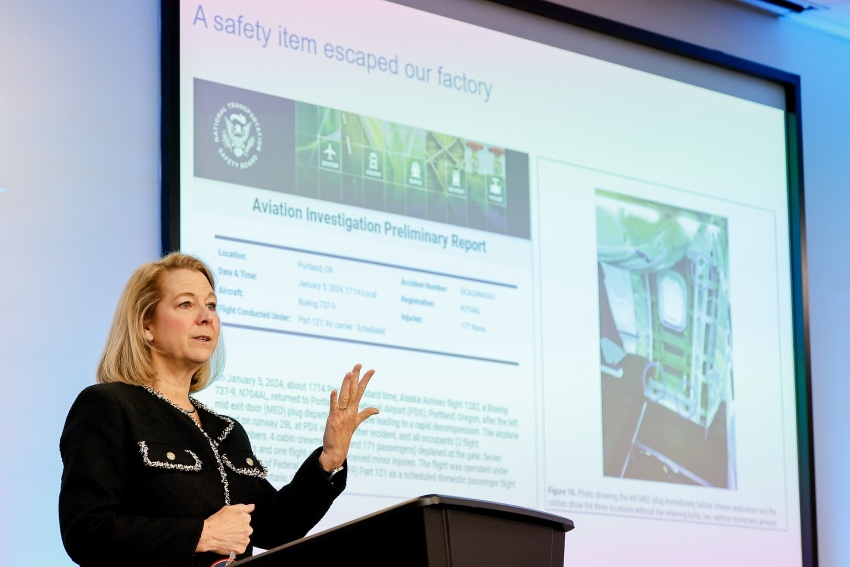 |
| Elizabeth Lund, SVP of Quality at Boeing |
At a press conference at the company’s 737 production site in Washington on June 25, Boeing's senior vice president of Quality Elizabeth Lund outlined the company's approach to mitigate risks and incidents.
Immediately following a door plug coming off an Alaska Airlines 737 MAX 9 jet flight due to missing bolts in January, Boeing ordered its engineering team to identify aircraft components and systems that could cause accidents.
Since 2018, a series of high-profile incidents, including two deadly 737 Max crashes overseas, and the explosive decompression incident in January that left an Alaska Airlines 737 Max flying without a section of its fuselage, have raised significant questions about the safety culture at the company, which was once renowned for its engineering excellence.
The National Transportation Safety Board traced the incident to missteps by Boeing. During production, Boeing employees removed the plug so workers for fuselage supplier Spirit AeroSystems could fix defective rivets. When replacing the plug, Boeing did not bolt it back in place.
Lind said that the fuselage came in from the supplier and when coming in the factory initial load, there were five non-conforming rivets. These non-conforming rivets in and of themselves did not create a safety hazard, but they were non-conforming, and they needed to be fixed.
“A defect entered the system from our supply chain. The defect travelled throughout our final assembly. And then there was a lack of compliance with our processes by using the correct documentation,” Lund said.
The company now requires that all jets undergo end-of-line checks of those critical systems immediately before delivery.
"We have added end-of-line inspections for critical systems, reinforced compliance to removal processes in production, updated training and improved clarify of mid-exit door work instructions, initiated steps to reduce travelled work coming into Boeing's factories, processed findings from in-service fleet inspections, and engaged with airline customers on best practices," she added.
Before on-the-job training, Boeing factory employees undergo a foundational training regime where they learn the basics of their factory tasks before moving to the production line. Every employee who comes out of foundational training gets assigned a mentor with more experience on the factory floor, Lund said.
"Boeing is also trying to streamline its production processes and instruction documents to make them easier for new hires to learn," she said. “We're using AI to go from engineering English to more-clear popular English with fewer words to say simple things that are super easy to understand.”
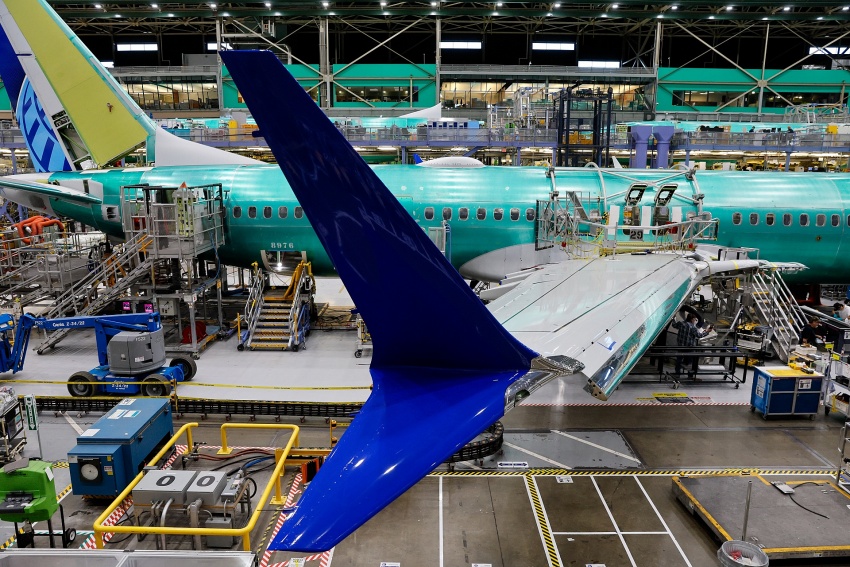 |
To eliminate defects in the manufacturing chain, Boeing said it has increased supplier oversight, improved foreign object debris, part and tool control plans to ensure adherence to work instructions, and institute approval before shipment from suppliers.
Part of that work includes sending more Boeing inspectors to its own suppliers to ensure that parts, like the fuselage produced by Spirit AeroSystems that was implicated in the Alaska Airlines incident in January, are defect-free before they even reach Boeing property.
To elevate safety and quality culture, safety management system is deployed fully across all facets of operations, safety and quality events are conducted to generate improvement ideas, first-line leader development is strengthened, and employees are further encouraged to report and involve.
“We have seen up to an 80 per cent reduction in defects since implementing these changes," Lund said.
Six key performance indicators are being established to monitor production health to provide real-time production system insights, and define criteria that will trigger corrective action and safety risk monitoring: employee proficiency, notice of escapement rework hours, supplier shortages, total rework hours, travelled work, and aircraft ticketing performance.
"We are committed to ensuring safe, high-quality aircraft and a safe workplace; strengthening our workforce and culture for lasting change; restoring production stability and delivering on our customer commitments; and rebuilding trust one great aircraft at a time," Lund said.
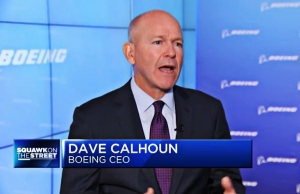 | Boeing CEO: Alaska Airlines incident 'our mistake,' vows transparency Boeing Chief Executive Dave Calhoun took responsibility on Tuesday for a near-catastrophic Alaska Airlines incident last week, vowing "complete transparency" as the aviation giant tries to pivot from its latest crisis. |
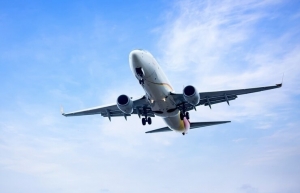 | Boeing shares take another hit from latest safety problem Shares of Boeing plunged Tuesday on expectations that toughened federal scrutiny following the aviation giant's mid-air safety problem earlier this month will drag on its financial performance. |
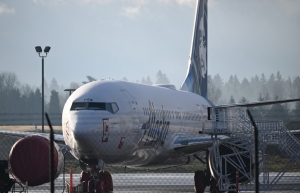 | Alaska Airlines finds many loose bolts on its Boeings as United questions orders Boeing came under renewed pressure Tuesday as the head of Alaska Airlines said inspections carried out after a dangerous incident had found many loose bolts on its 737 MAX 9 aircraft. |
 | Boeing appoints new president for Southeast Asia Boeing has named Penny Burtt as the new president of the company’s Southeast Asia business, effective July 3. |
What the stars mean:
★ Poor ★ ★ Promising ★★★ Good ★★★★ Very good ★★★★★ Exceptional
Related Contents
Latest News
More News
- Businesses ramp up production as year-end orders surge (December 30, 2025 | 10:05)
- Vietjet chairwoman awarded Labour Hero title (December 29, 2025 | 13:06)
- How to unlock ESG value through green innovation (December 29, 2025 | 10:03)
- AI reshapes media and advertising industry (December 29, 2025 | 08:33)
- FPT and GELEX sign deal to develop blockchain tech for global markets (December 29, 2025 | 08:29)
- Vietnam’s GDP forecast to grow by 9 per cent in 2026 (December 29, 2025 | 08:29)
- Women entrepreneurs are key to Vietnam’s economic growth (December 29, 2025 | 08:00)
- Vietnam's top 500 value-creating enterprises announced (December 27, 2025 | 08:00)
- The PAN Group shaping a better future with ESG strategy (December 26, 2025 | 09:00)
- Masan Consumer officially lists on HSX, marking the next phase of value creation (December 25, 2025 | 13:20)

 Tag:
Tag:



























 Mobile Version
Mobile Version